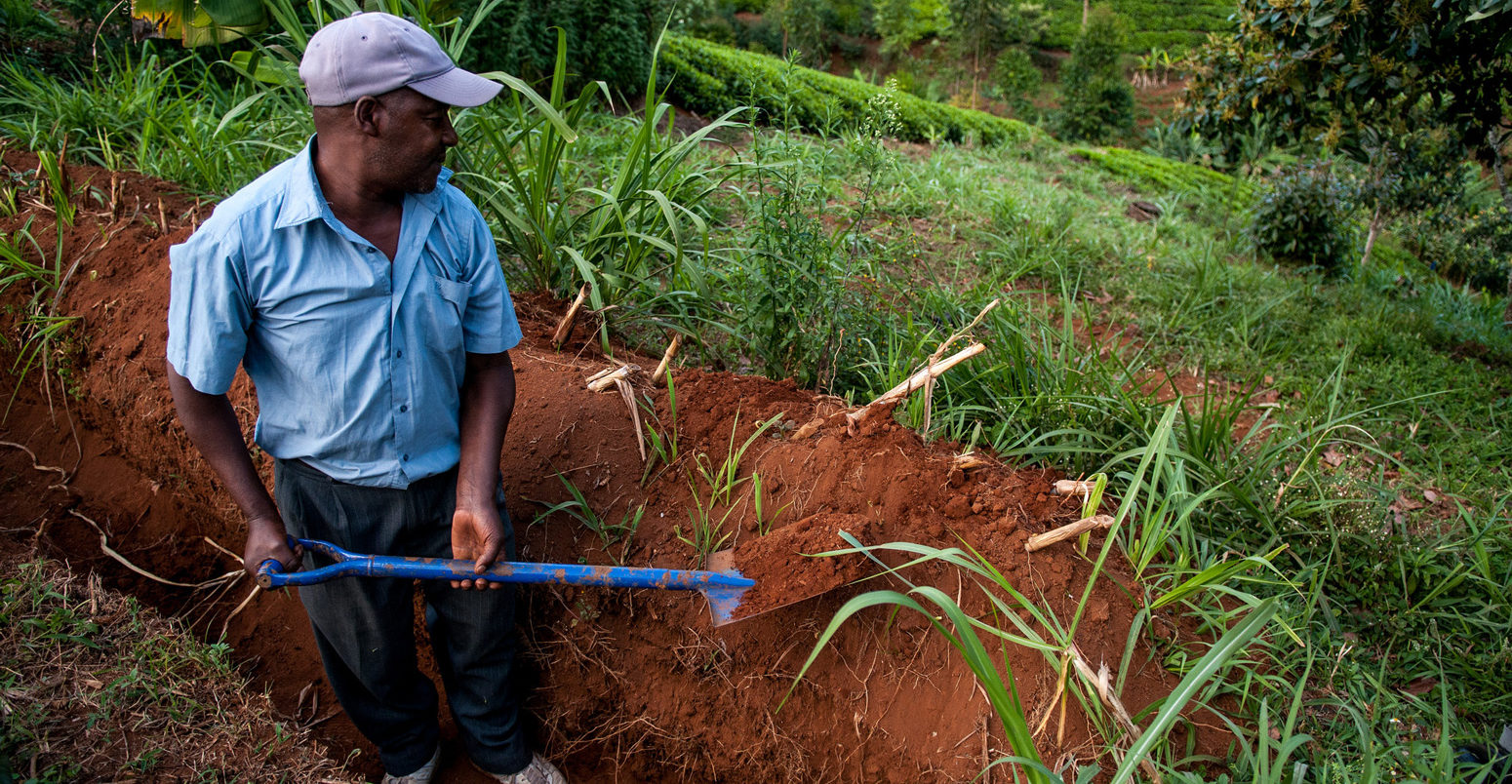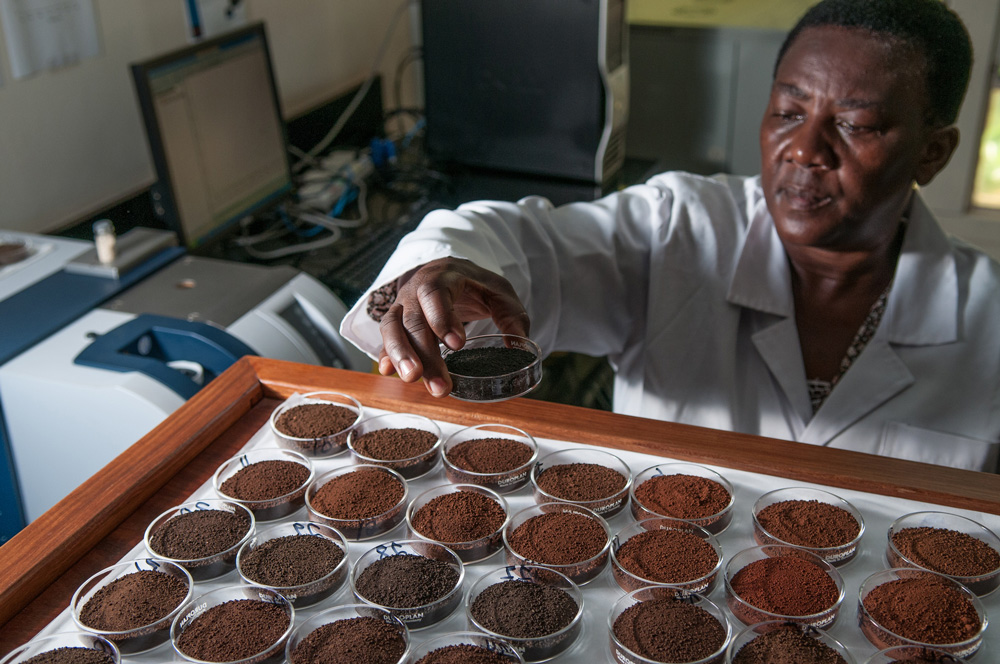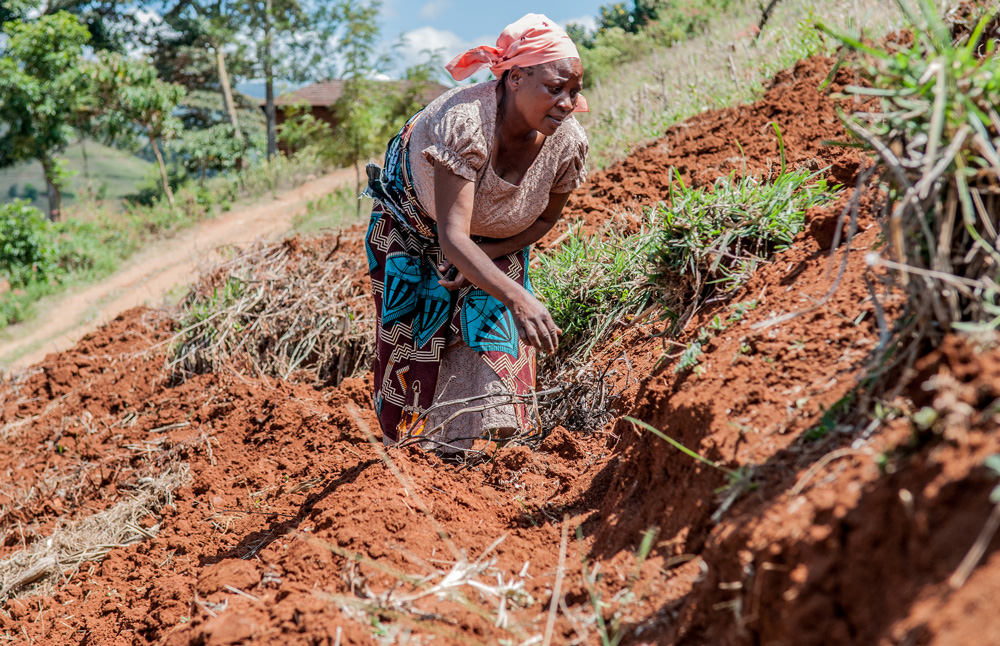
Guest post: Improving Africa’s soils to cut emissions and boost food security
Multiple Authors
08.02.17Multiple Authors
02.08.2017 | 8:00amDr Keith Shepherd is a principal soil scientist at the World Agroforestry Centre (ICRAF) and Dr Rolf Sommer is a principal soil and climate change scientist at the International Center for Tropical Agriculture (CIAT). Together they lead the Restoring Degraded Landscapes research theme of the CGIAR Research Program on Water, Land and Ecosystems (WLE).
How we manage soils is crucial to tackling climate change. Today is Earth Overshoot Day, which aims to highlight the moment each year when our use of the planet’s resources tips into “overdraft”. The day helps to highlight why restoring landscapes, particularly soils, has benefits for food security, livelihoods and the climate.
The top metre of soils around the world contains about three times as much carbon as in our entire atmosphere. This means that soils can be a double-edged sword for tackling climate change.
Land-use change and degradation, such as clearing land for farming, releases the carbon bound up in soils, adding to the CO2 accumulating in the atmosphere. On the other hand, managing soils carefully and restoring their fertility means they can take up more carbon, helping to mitigate our CO2 emissions and thereby limiting climate change.

Selian Agricultural Research Institute, Arusha, Tanzania Credit: Georgina Smith / CIAT
In a recent comment article in Nature, leading climate scientists identified achieving zero emissions from land-use changes and deforestation as one of six milestones that must be met within the next three years if we are to meet the goals set out in the Paris Agreement.
Restoring degraded lands is one promising option. For example, the 4 parts per 1000 initiative (“4p1000”) aims to increase the carbon stored in the world’s soils by 0.4% per year in order to sequester the human-caused CO2 emissions that aren’t already absorbed by the land or oceans.
Recent analysis shows that 25-50% of this target (equivalent to 0.9-1.85bn tonnes of carbon per year) could be achieved on the 16 million square kilometres of suitable farmland across the world. This would sequester about 6-13% of all CO2 emissions from human activity.
Our research has identified several relatively simple, low-cost options for restoring African landscapes to help cut emissions from soils and even turn them into carbon sinks.
Here are three that are key to reaching zero emissions from land:
Soil and water conservation
Water is essential for productive soils, but it can also be disastrous. Heavy rainfall events – likely to become more intense as the climate warms – washes soil off the land, particularly hillsides or in areas with highly erodible soil types. This strips the land of its nutrients, reduces agricultural productivity, and clogs waterways and reservoirs, thus increasing costs for purifying drinking water.
Measures such as reforestation, creating hillside terraces, maintaining continuous soil cover with vegetation and mulches, and reclaiming gullies can help protect the soil from heavy rain.
And the benefits can be far-reaching. In a series of interviews with farmers in Ethiopia, our research shows that implementing measures to conserve soil and water can improve farm incomes by an average of 50%. This includes doubling crop productivity and the fodder available to feed animals, while also reducing by a third the risk of crop failure due to droughts and other climate shocks.
Sustainable land management
The aim of sustainable land management is, simply, to reap the benefits of the land (e.g. for producing crops) whilst maintaining the quality of its soil, water and biodiversity.
Several options exist to help manage land sustainably. For example, our research shows that closing off plots of degraded land (creating “exclosures”) – such as communal grazing land – from people and domestic animals is an effective way to rehabilitate soils.
Exclosures can help allow a rich diversity in plant species to establish, which contributes to higher densities of carbon stored in both trees and in the soil. Farmers report benefiting from increased livestock fodder production and reduced soil erosion.
Improved land management is also benefiting both farmers and businesses in the Tana river basin in southeastern Kenya.
For example, planting trees along river banks and installing drip irrigation is helping to reduce soil erosion, which in turn limits sedimentation and siltation in water streams in the lower parts of the basin. As a result, farmers upstream enjoy more productive lands, and businesses downstream – like Coca-Cola and KenGen, the largest electricity supplier in the country – are guaranteed a more reliable supply of water, critical to their operations.
Improved soil data
A lack of data is still a problem for much of Africa. A better picture of Africa’s soils is urgently needed to help meet mitigation targets and understand which soils can sink the most carbon and how. Most soils have a limit, and increased organic carbon stock in soils depends on the type of soils and what the land is used for.
Launched in 2008, the Africa Soil Information Service (AfSIS) is trying to fill these data gaps. It contains the most comprehensive set of soil data in Africa, with over 28,000 sampling locations and supports soil labs in 10 African countries.

Community terracing, Lushoto, Tanzania Credit: Georgina Smith / CIAT
The results are being used to map soil properties in Africa, such as soil organic carbon, nutrient content and texture. This information can help decision makers make better and more informed choices about how and where to boost agricultural production, including what types and amount of fertilisers to use, and the potential for carbon sequestration in different soils.
These findings underscore the need for more research and tools – such as this new soil organic carbon app – to help choose where and how to foster sequestration of carbon in soils.
Within reach
Overall, the annual global cost of land degradation is estimated at around $300bn. Yet the cost of taking action against land degradation is much lower than the cost of inaction, and the returns are high. For example, on average, a $1 investment into restoration of degraded land returns $5. This means it makes both environmental and economic sense.
Achieving zero emissions from land use is within reach. Using methods like those suggested here, we can help restore degraded lands and keep lands from being degraded.
In doing so, we can simultaneously contribute to global food security and reduce atmospheric carbon emissions.
-
Guest post: Improving Africa’s soils to cut emissions and boost food security

